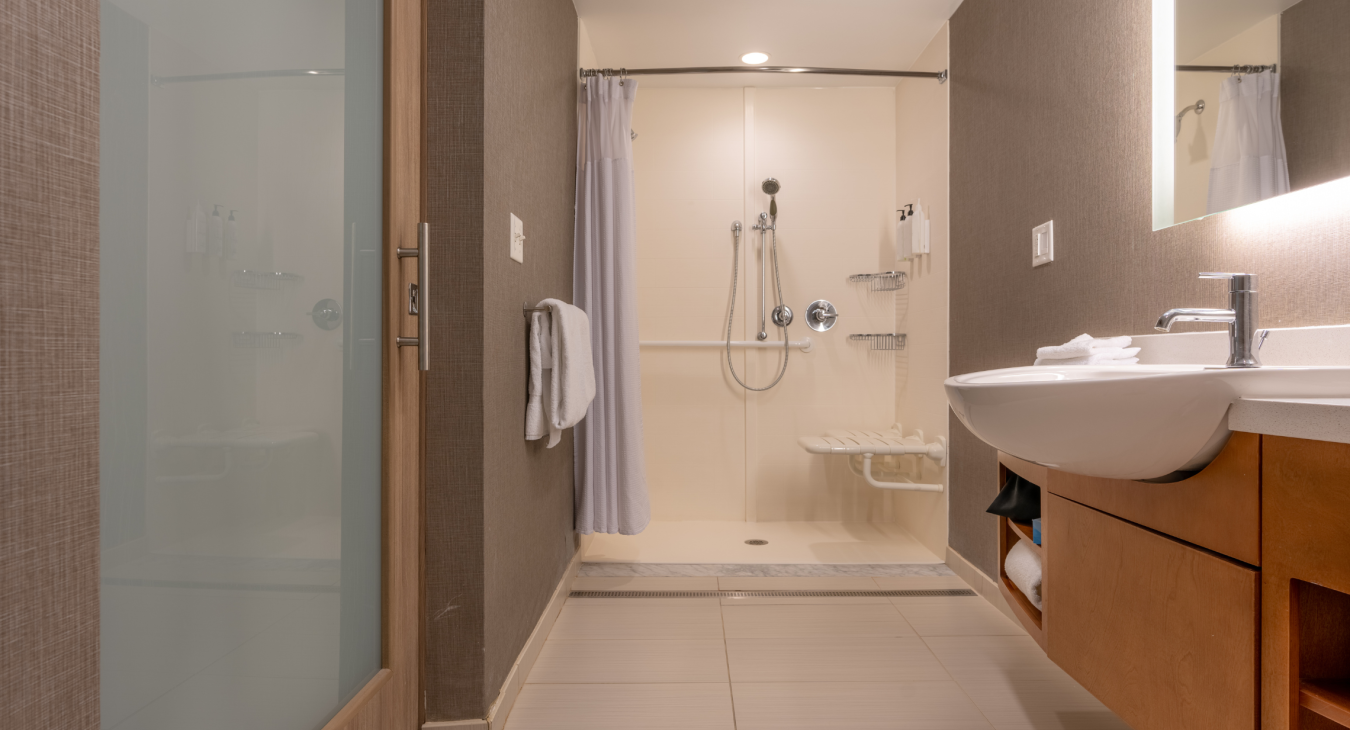
Creating an accessible home goes beyond modifying doorways and ramps, it requires thoughtful design and adaptation of essential systems like electrics, heating and plumbing.
These adjustments improve comfort, convenience and independence for wheelchair users and those with reduced mobility. Carefully planned improvements can significantly increase safety, reduce barriers and improve overall quality of life for residents.
Electrical Modifications
Lowered Switches and Outlets
One of the primary electrical adaptations involves adjusting the height of switches and outlets. For wheelchair users, standard switch heights can be challenging to reach. In the UK, Part M of the Building Regulations states that controls, sockets and switches should be positioned between 450mm and 1200mm above the finished floor level, with a minimum of 350mm clearance from any corner to ensure accessibility.
Additionally, consider installing rocker switches which are easier to operate than traditional toggle switches. Sockets and switches should also be positioned to avoid obstruction by furniture or appliances.
Lighting
Proper lighting is essential for safety and usability. Ensure that all areas of the home are well-lit, particularly entryways, hallways and staircases. Motion-activated lights can provide additional convenience and security, eliminating the need to manually operate switches in the dark.
Smart Home Technology
Integrating smart home technology is great for increased accessibility. Voice-activated systems and remote-controlled devices allow users to control lighting, heating and appliances without physical exertion. Smart thermostats, for instance, can be adjusted via smartphone apps, ensuring that the home remains at a comfortable temperature without requiring manual adjustments.
Automatic Door Openers
Automatic door openers are a crucial addition for ease of movement within the home. These devices can be operated via a remote control or a wall-mounted button, allowing wheelchair users to open and close doors effortlessly. For added convenience, consider integrating these openers with a smart home system.
Heating Adaptations
Even and Consistent Heating
Ensuring even and consistent heating throughout the home is vital for comfort. Underfloor heating systems are an excellent option for wheelchair-accessible homes. These systems provide uniform heat distribution, eliminating cold spots and ensuring comfortable environment. Additionally, they do not obstruct movement or create hazards as traditional radiators might.
Accessible Thermostats
The placement of thermostats should be within easy reach of wheelchair users. Consider installing programmable or smart thermostats that can be controlled remotely. These devices allow users to set and adjust temperatures without having to physically reach the thermostat, providing greater convenience and comfort.
Energy-Efficient Solutions
Energy efficiency is an important consideration in any home, but it becomes even more critical in an accessible home where maintaining a comfortable temperature is essential. Insulating the home properly, using double-glazed windows and opting for energy-efficient heating systems can help reduce energy consumption and lower utility bills.
Plumbing Adjustments
Accessible Bathrooms
Bathrooms are one of the most important areas to adapt for accessibility. Installing roll-in showers with grab bars, handheld showerheads and non-slip flooring can significantly improve safety and usability. Additionally, consider installing raised toilets with support frames and ensure there is enough space for wheelchair manoeuvrability. Lever-style or motion-sensor taps are easier to operate than traditional knob taps and simplify water control.
Lowered Sinks and Countertops
For wheelchair users, the height of sinks and countertops can be a major barrier. For an accessible home, they should be between 760mm and 800mm from the floor with enough knee clearance underneath sinks to allow for comfortable use. Sinks should be shallow, no more than 150mm deep, with insulation to the underside to avoid scalding.
Temperature Control
Scalding can be a serious risk for individuals with mobility issues. Installing anti-scald devices on taps and showerheads can prevent accidental burns. Additionally, the water heater should be set to a safe maximum temperature of 60°C to further reduce the risk of scalding. The water delivered at the tap should be no more than 50°C.
General Considerations
Wide Doorways and Hallways
Ensuring that doorways and hallways are wide enough for wheelchair access is a fundamental aspect of creating an accessible home. For wheelchair users to pass through safely and comfortably, doorways should have a minimum opening width of 840mm but ideally, they should be 900mm wide.
Flooring Choices
The type of flooring used in an accessible home is crucial. Hard, smooth surfaces such as hardwood, laminate or tile are ideal for wheelchair users as they provide easier movement compared to carpeted floors. Non-slip finishes are also important for safety, particularly in areas prone to moisture, such as bathrooms and kitchens.
Emergency Preparedness
In an accessible home, emergency preparedness is crucial. Ensure that smoke detectors, carbon monoxide detectors and alarm systems are installed and functioning properly. These devices should be easily accessible and feature both audible and visual alerts to cater to different sensory needs, such as flashing lights or vibrating pads for those with hearing impairments. Install intercom systems or panic buttons for quick access to assistance, providing peace of mind and improved safety.
It is important to consult the latest accessibility guidelines and professional specialists to guarantee that all modifications comply with UK building regulations and best practices.
Feeling overwhelmed? Our friendly and experienced team can support you with any heating, plumbing and electrical adaptations needed to make your home accessible for wheelchair users. Give us a call on 01305 318558 or fill out our online form for a no-obligation consultation and quote.

